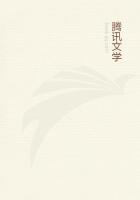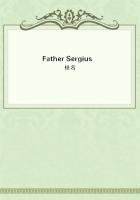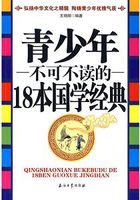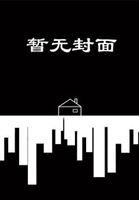E.g. of concavity flesh (for this is the matter in which it is produced) is not a part, but of snubness it is a part; and the bronze is a part of the concrete statue, but not of the statue when this is spoken of in the sense of the form. (For the form, or the thing as having form, should be said to be the thing, but the material element by itself must never be said to be so.) And so the formula of the circle does not include that of the segments, but the formula of the syllable includes that of the letters; for the letters are parts of the formula of the form, and not matter, but the segments are parts in the sense of matter on which the form supervenes; yet they are nearer the form than the bronze is when roundness is produced in bronze. But in a sense not even every kind of letter will be present in the formula of the syllable, e.g. particular waxen letters or the letters as movements in the air; for in these also we have already something that is part of the syllable only in the sense that it is its perceptible matter. For even if the line when divided passes away into its halves, or the man into bones and muscles and flesh, it does not follow that they are composed of these as parts of their essence, but rather as matter; and these are parts of the concrete thing, but not also of the form, i.e. of that to which the formula refers; wherefore also they are not present in the formulae. In one kind of formula, then, the formula of such parts will be present, but in another it must not be present, where the formula does not refer to the concrete object. For it is for this reason that some things have as their constituent principles parts into which they pass away, while some have not. Those things which are the form and the matter taken together, e.g. the snub, or the bronze circle, pass away into these materials, and the matter is a part of them; but those things which do not involve matter but are without matter, and whose formulae are formulae of the form only, do not pass away,-either not at all or at any rate not in this way. Therefore these materials are principles and parts of the concrete things, while of the form they are neither parts nor principles. And therefore the clay statue is resolved into clay and the ball into bronze and Callias into flesh and bones, and again the circle into its segments; for there is a sense of 'circle' in which involves matter. For 'circle' is used ambiguously, meaning both the circle, unqualified, and the individual circle, because there is no name peculiar to the individuals.
The truth has indeed now been stated, but still let us state it yet more clearly, taking up the question again. The parts of the formula, into which the formula is divided, are prior to it, either all or some of them. The formula of the right angle, however, does not include the formula of the acute, but the formula of the acute includes that of the right angle; for he who defines the acute uses the right angle; for the acute is 'less than a right angle'. The circle and the semicircle also are in a like relation; for the semicircle is defined by the circle; and so is the finger by the whole body, for a finger is 'such and such a part of a man'. Therefore the parts which are of the nature of matter, and into which as its matter a thing is divided, are posterior; but those which are of the nature of parts of the formula, and of the substance according to its formula, are prior, either all or some of them. And since the soul of animals (for this is the substance of a living being) is their substance according to the formula, i.e. the form and the essence of a body of a certain kind (at least we shall define each part, if we define it well, not without reference to its function, and this cannot belong to it without perception), so that the parts of soul are prior, either all or some of them, to the concrete 'animal', and so too with each individual animal; and the body and parts are posterior to this, the essential substance, and it is not the substance but the concrete thing that is divided into these parts as its matter:-this being so, to the concrete thing these are in a sense prior, but in a sense they are not. For they cannot even exist if severed from the whole; for it is not a finger in any and every state that is the finger of a living thing, but a dead finger is a finger only in name. Some parts are neither prior nor posterior to the whole, i.e.
those which are dominant and in which the formula, i.e. the essential substance, is immediately present, e.g. perhaps the heart or the brain; for it does not matter in the least which of the two has this quality. But man and horse and terms which are thus applied to individuals, but universally, are not substance but something composed of this particular formula and this particular matter treated as universal; and as regards the individual, Socrates already includes in him ultimate individual matter; and similarly in all other cases. 'Apart' may be a part either of the form (i.e. of the essence), or of the compound of the form and the matter, or of the matter itself.
But only the parts of the form are parts of the formula, and the formula is of the universal; for 'being a circle' is the same as the circle, and 'being a soul' the same as the soul. But when we come to the concrete thing, e.g. this circle, i.e. one of the individual circles, whether perceptible or intelligible (I mean by intelligible circles the mathematical, and by perceptible circles those of bronze and of wood),-of these there is no definition, but they are known by the aid of intuitive thinking or of perception; and when they pass out of this complete realization it is not clear whether they exist or not; but they are always stated and recognized by means of the universal formula. But matter is unknowable in itself. And some matter is perceptible and some intelligible, perceptible matter being for instance bronze and wood and all matter that is changeable, and intelligible matter being that which is present in perceptible things not qua perceptible, i.e. the objects of mathematics.


